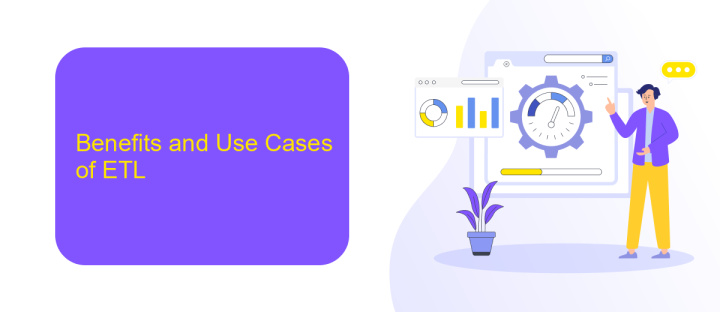ETL Meaning Data Science
ETL, which stands for Extract, Transform, Load, is a crucial process in data science that involves extracting data from various sources, transforming it into a suitable format, and loading it into a data warehouse or another system. This process ensures that data is accurate, consistent, and ready for analysis, making it a foundational element in the field of data science.
Introduction: What is ETL?
ETL, which stands for Extract, Transform, Load, is a crucial process in data science and analytics. It involves extracting data from various sources, transforming it into a suitable format, and loading it into a data warehouse or another target system. This process ensures that data is clean, consistent, and ready for analysis, enabling organizations to make data-driven decisions.
- Extract: This step involves collecting data from multiple sources, such as databases, APIs, and flat files.
- Transform: In this phase, data is cleaned, filtered, and formatted to meet the requirements of the target system. This may include data normalization, aggregation, and enrichment.
- Load: Finally, the transformed data is loaded into a target system, such as a data warehouse, where it can be accessed for analysis and reporting.
Effective ETL processes are essential for maintaining data integrity and enabling accurate analytics. Tools like ApiX-Drive can simplify the integration and automation of ETL workflows, allowing organizations to seamlessly connect various data sources and streamline their data management processes.
Benefits and Use Cases of ETL

ETL (Extract, Transform, Load) processes offer significant benefits in data science by enabling the seamless integration and transformation of data from various sources. This streamlined approach ensures that data is clean, consistent, and ready for analysis, thus enhancing the accuracy and efficiency of data-driven decision-making. By transforming raw data into a structured format, ETL processes help organizations uncover valuable insights, optimize operations, and drive innovation.
Common use cases of ETL include data warehousing, where large volumes of data are consolidated into a central repository for easy access and analysis. ETL is also crucial in business intelligence, allowing companies to generate comprehensive reports and dashboards. Services like ApiX-Drive facilitate the setup of these integrations by providing automated tools for extracting, transforming, and loading data across different platforms. This not only saves time but also minimizes errors, ensuring that data is reliable and up-to-date for strategic planning and operational efficiency.
ETL Process Explained: A Step-by-Step Guide

The ETL process is essential in data science for transforming raw data into meaningful insights. ETL stands for Extract, Transform, Load, and it involves three main steps to ensure data is usable and accessible.
- Extract: This step involves gathering data from various sources such as databases, APIs, and flat files. Tools like ApiX-Drive can simplify this process by automating data extraction from multiple sources.
- Transform: During transformation, the extracted data is cleaned, formatted, and enriched to meet analytical requirements. This may include filtering out irrelevant data, converting data types, and merging datasets.
- Load: The final step is loading the transformed data into a target system, such as a data warehouse or data lake, where it can be accessed for analysis and reporting.
By following these steps, organizations can ensure that their data is accurate, consistent, and ready for analysis. Leveraging tools like ApiX-Drive can further streamline the ETL process, making data integration and management more efficient.
Tools and Technologies for ETL

ETL (Extract, Transform, Load) processes are fundamental in data science for preparing data for analysis. Various tools and technologies are available to streamline these processes, ensuring data is efficiently integrated and ready for use.
Several tools stand out in the ETL landscape, each offering unique features to address different aspects of data handling. They range from open-source solutions to comprehensive commercial platforms, catering to both small-scale projects and enterprise-level data workflows.
- Apache NiFi: An open-source tool designed for data flow automation, providing robust data routing, transformation, and system mediation logic.
- Talend: A versatile ETL tool that offers a wide array of data integration and management features, suitable for complex data environments.
- ApiX-Drive: A service that simplifies the integration of various applications, allowing seamless data transfer and synchronization across platforms.
- Microsoft SSIS: A component of the Microsoft SQL Server, providing a platform for data integration and workflow applications.
Choosing the right ETL tool depends on the specific requirements of your project, including data volume, complexity, and integration needs. Tools like ApiX-Drive are particularly useful for automating integrations and ensuring seamless data flow between diverse systems, making them invaluable in modern data science workflows.


Real-World Examples of ETL in Data Science
One real-world example of ETL in data science is in the field of e-commerce. Online retailers often collect vast amounts of data from various sources such as customer transactions, web analytics, and social media interactions. By using ETL processes, this data can be extracted from these disparate sources, transformed into a consistent format, and loaded into a centralized data warehouse. This enables data scientists to perform comprehensive analyses, such as identifying purchasing trends, predicting customer behavior, and optimizing inventory management.
Another example is in healthcare, where ETL processes are used to integrate data from electronic health records (EHR), lab results, and patient feedback. Services like ApiX-Drive can facilitate these integrations by automating the data extraction and transformation phases, ensuring that data from different systems is harmonized and ready for analysis. This integrated data can be used to improve patient outcomes through predictive analytics, streamline hospital operations, and support research initiatives. By leveraging ETL, healthcare providers can make data-driven decisions that enhance both patient care and operational efficiency.
FAQ
What does ETL stand for in Data Science?
Why is ETL important in Data Science?
What are the common steps involved in the ETL process?
How can ETL processes be automated?
What are the challenges associated with ETL in Data Science?
Apix-Drive will help optimize business processes, save you from a lot of routine tasks and unnecessary costs for automation, attracting additional specialists. Try setting up a free test connection with ApiX-Drive and see for yourself. Now you have to think about where to invest the freed time and money!

